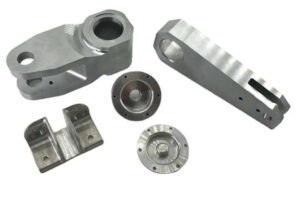Magnesium Die Casting: Advantages, Process, and Applications

It is a kind of die casting and widely utilized manufacturing process known for its exceptional strength-to-weight ratio and outstanding dimensional stability. This article provides an in-depth exploration of magnesium die casting, including its advantages, the die casting process, and its various applications across industries. Whether you’re an industry professional or an enthusiast seeking to expand your knowledge, this article will provide valuable insights into the world of magnesium die casting.
1. Advantages of Magnesium Die Castings:
It offers several advantages that make it a preferred choice in numerous applications. Some key benefits include:
a. Lightweight and Strong:
Magnesium is one of the lightest structural materials available, offering a high strength-to-weight ratio. This makes it ideal for applications that require weight reduction without compromising durability.
b. Excellent Machinability:
Magnesium alloys have superior machinability compared to other metals, allowing for precise component fabrication and reduced post-processing requirements.
c. Dimensional Stability:
Magnesium die castings exhibit excellent dimensional stability over time, retaining their shape and structural integrity even under varying temperatures and mechanical stresses.
d. High Thermal and Electrical Conductivity:
Magnesium alloys possess excellent thermal and electrical conductivity, making them suitable for applications that require efficient heat dissipation or electrical conductivity.
e. Enhanced Surface Finish:
It exhibit excellent surface finish, requiring minimal post-processing to achieve desired aesthetics.
2. The Magnesium Die Castings Process:
The magnesium die casting process involves several steps to transform magnesium alloys into complex, high-precision components. Here’s an overview of the process:
a. Die Design and Fabrication:
The process begins with the design and fabrication of a die, which is the mold used to shape the molten magnesium.
b. Alloy Melting and Preparation:
Magnesium alloys are melted in a furnace, and necessary additives are incorporated to enhance their properties and reduce oxidation.
c. Injection and Solidification:
The molten magnesium is injected into the die under high pressure. The pressure ensures complete filling of the die cavity and facilitates rapid solidification.
d. Cooling and Ejection:
The cast component is allowed to cool and solidify within the die. Once adequately solidified, the die opens, and the finished casting is ejected.
e. Post-processing and Finishing:
The cast components may undergo trimming, removal of excess material, surface finishing, and other secondary operations to achieve the desired specifications.
3. Applications of Magnesium Die Castings:
It finds applications in various industries due to its exceptional properties. Some notable applications include:
a. Automotive Industry:
Magnesium die castings are used in components such as gearbox housings, steering columns, engine blocks, and lightweight structural parts, contributing to fuel efficiency and overall weight reduction.
b. Aerospace and Defense:
Magnesium die casting plays a vital role in aircraft and defense applications, including helicopter gearbox housings, missile parts, and structural components.
c. Electronics and Communication:
Due to its excellent electrical conductivity and heat dissipation properties, magnesium die casting is utilized in electronic housings, communication equipment, and computer components.
d. Medical Devices:
Magnesium die castings are employed in medical devices and equipment, where lightweight, biocompatible materials are crucial for patient comfort and functionality.
e. Consumer Goods:
From handheld tools to sporting goods and household appliances, magnesium die castings offer durability, aesthetics, and weight reduction.
Conclusion:
Magnesium die casting is a highly versatile and efficient process known for its lightweight yet strong components. The advantages of magnesium, combined with the precision and versatility of the die casting process, make it a preferred choice in diverse industries such as automotive, aerospace, electronics, and medical devices. Understanding the potential and capabilities of magnesium die casting provides manufacturers with the knowledge to create innovative, high-quality components that meet the demands of modern applications.






